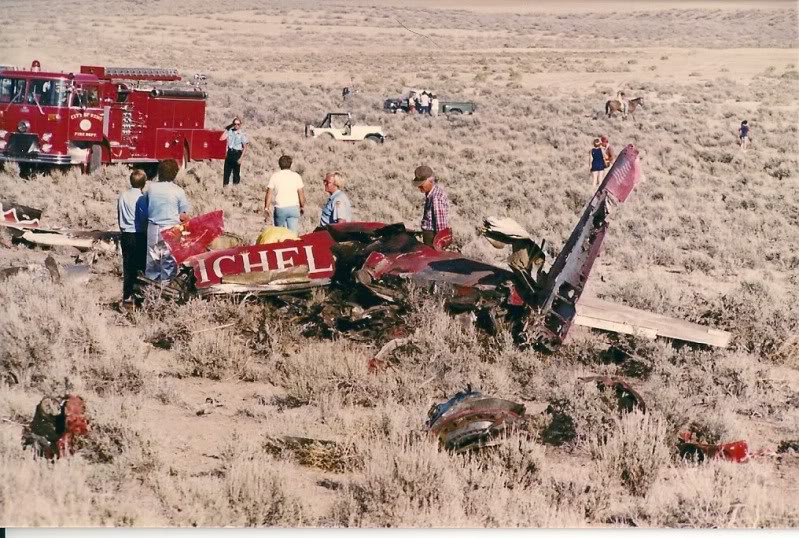Mayday over the Wash
Join Date: Jan 2009
Location: Oxford, UK
Posts: 1,546
Likes: 0
Received 0 Likes
on
0 Posts
Question: as the T-tail is useful for elevating or lowering the nose of the aircraft, it should still be effective very near or on the ground in a field landing, better than a standard elevator?
No Mary. They run out of elevator authority before the standard one does. Well known for it. The Lance suffers from the same.
Once when a Bulldog went in, one of our QFIs told us : 'You may think that as the fuselage looks intact, that it may have been survivable. Let me assure you, that the aircraft hit the ground with enough force.....' To put it politely, it wasn't survivable.
Join Date: Jul 2014
Location: Santa Rosa, CA, USA
Age: 71
Posts: 169
Likes: 0
Received 0 Likes
on
0 Posts
It took some effort, but i found a photo. The text is from a sponsor, Michelob beer.

Looking at the wreck of the Piper I too thought it looked survivable, sorry it wasn't.
Last edited by PrivtPilotRadarTech; 22nd Sep 2017 at 22:13. Reason: add image
One of the features of tin built aircraft is that they can suffer deformation during the crash and then recover to an undamaged looking state. Oil canning on a grand scale. The cabin can be deformed/crushed to the point of killing the occupants and then pop out to an almost undamaged looking state.
Gnome de PPRuNe
Join Date: Jan 2002
Location: Too close to Croydon for comfort
Age: 60
Posts: 12,662
Received 320 Likes
on
178 Posts
Some years ago Pilot Dar posted a photo of an SF260 which crashed recovering from a spin at Oshkosh. The airframe looked remarkably intact, yet the pilot succumbed to his injuries a day or two later.
Join Date: May 2004
Location: Bear Island
Posts: 598
Likes: 0
Received 0 Likes
on
0 Posts
A footnote relating to the PA28R201T, as I used to instruct on these.
In common with many products from this manufacturer, there was an automatic gear lowering feature, which doubtless saved many a red face in the flying club bar, but was a pain in the neck in the event of an engine failure. Our SOP was to override the system.
If you did not, as you reduced towards best slide speed, the gear would suddenly deploy and your carefully planned circuit would be history.
The extra drag is significant on this aircraft type.
Very sad to see two people lose their lives in this accident.
In common with many products from this manufacturer, there was an automatic gear lowering feature, which doubtless saved many a red face in the flying club bar, but was a pain in the neck in the event of an engine failure. Our SOP was to override the system.
If you did not, as you reduced towards best slide speed, the gear would suddenly deploy and your carefully planned circuit would be history.
The extra drag is significant on this aircraft type.
Very sad to see two people lose their lives in this accident.
I understood this was due to the fact that the horizontal stab in a T tail is up out of the prop-wash and therefore has less authority at lower speeds; which would not be relevant with a failed engine.
I tend to land both types with a closed throttle. The T-tail a few knots quicker to avoid a nosewheel-first arrival. I've been told that the conventional tail is in in clean air in the flare. The T-tail is partially blanked by disturbed air from the wings.
I don't know if this is true and I don't care. I do know that the last aircraft to drop short of the runway at my base and rip its gear off was a Lance. Not me.
I don't know if this is true and I don't care. I do know that the last aircraft to drop short of the runway at my base and rip its gear off was a Lance. Not me.

The AAIB report is now out.
The conclusion is catastrophic engine failure due to poor maintenance and infrequent use.
https://assets.publishing.service.go...BHAY_08-18.pdf
The conclusion is catastrophic engine failure due to poor maintenance and infrequent use.
https://assets.publishing.service.go...BHAY_08-18.pdf




